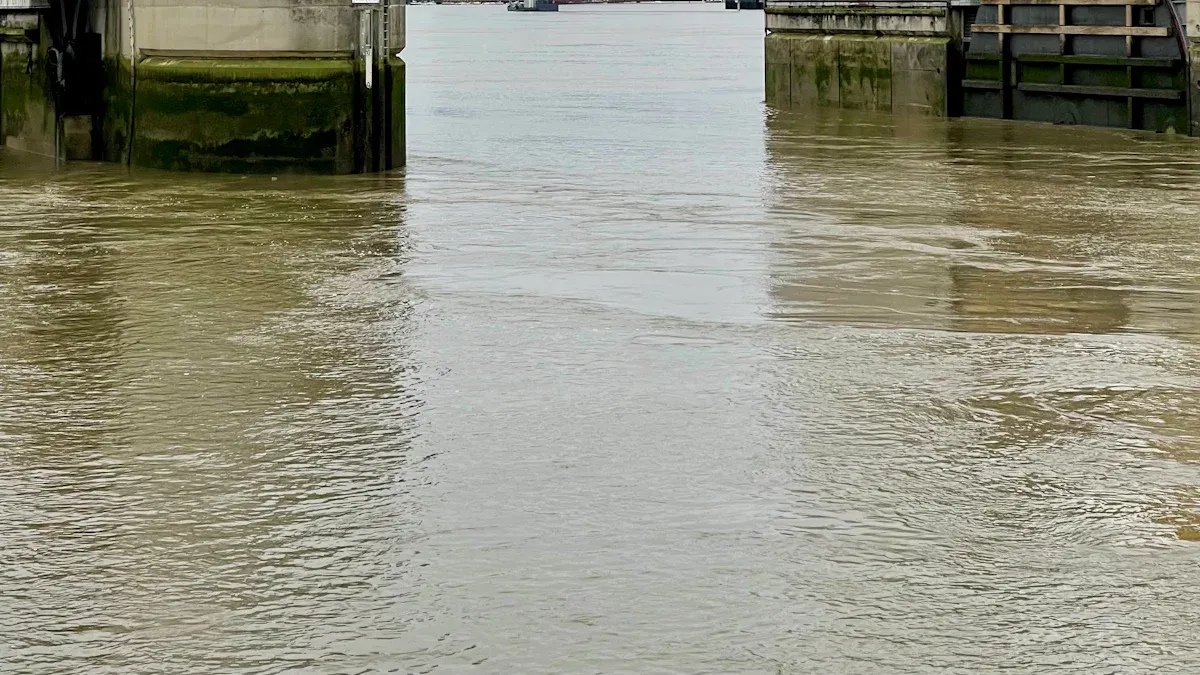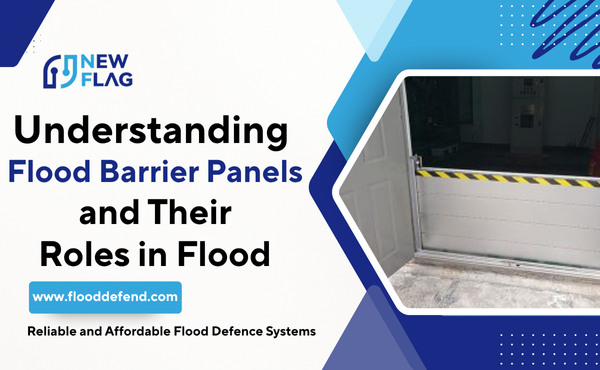
You can determine how tall your flood barrier should be by using a simple rule: take the highest flood level ever recorded at your location and add a 10-20% margin for safety.
Accurate measurements will help you choose the best flood barrier for your needs. Always check both the height and the length when looking at Flood Barrier Size. This approach keeps your property protected and makes the process clear.
Key Factors for Flood Barrier Height
When you choose flood protection barriers, you need to consider several important factors. Each one helps you decide how tall your barrier should be for the best protection against flood events.
Assessing Flood Risk
You should start by understanding your flood risk. Look at how often floods happen in your area and how severe they can get. If you live near a river or in a coastal zone, your risk may be higher.
You can use flood risk maps from local authorities or online resources like FEMA Flood Map Service Center to check your risk level. High-risk areas need taller flood protection barriers to keep water out during major storms.
Local Topography and Drainage
The shape of the land around your property affects how floodwater moves. If your home sits in a low spot or at the bottom of a hill, water can collect quickly. Poor drainage can make flooding worse.
You should study the slopes, natural channels, and drainage systems near your property. Good drainage can lower your flood risk, but you still need flood protection barriers if water can reach your building.
- Flat land may need higher barriers because water spreads out.
- Steep slopes can cause fast-moving water, which may require stronger flood protection barriers.
For more details on how topography affects flood risk, visit Flood Risk Assessment: Understanding Your Land.
Historical Flood Data
You should always check the highest flood levels recorded in your area. Historical flood data gives you a clear idea of what to expect.
Local government offices or weather services often keep records of past floods. Use this information to set the minimum height for your flood protection barriers. Add a safety margin to account for future changes in weather patterns.
| Data Source | What to Look For |
|---|---|
| Local government | Highest flood levels |
| Weather services | Frequency of floods |
| Community records | Past flood damage |
You can learn more about using historical data at NOAA Flood Data Resources.
Building Codes and Regulations
Local building codes and regulations set rules for flood protection barriers. You must follow these rules to keep your property safe and avoid fines.
Some areas require a minimum barrier height based on flood risk zones. Always check with your city or county office before you install any flood protection barriers. Regulations may change, so stay updated.
Note: Using local data and following regulations ensures your flood protection barriers work as intended and meet legal standards.
When you combine these factors, you get a clear picture of how tall your flood protection barriers should be. Local data and rules help you make smart choices for flood protection. You protect your property and stay prepared for future flood events.
Types of Flood Barriers and Height Options

Temporary, Semi-Permanent, and Permanent Barriers
You can choose from three main types of flood barriers: temporary, semi-permanent, and permanent. Each type offers different flood protection and fits different needs.
Temporary flood barriers work well for short-term flood events or emergencies. You can set them up quickly before a storm surge or heavy rain.
These barriers usually range from 1 to 4 feet in height. Semi-permanent flood barriers stay in place for a season or longer. They provide stronger protection and often reach 2 to 6 feet tall. Permanent flood barriers become part of your property. These barriers can handle repeated flood events and often stand 3 to 8 feet high.
You should always match the flood barrier size to your flood risk and property layout. Learn more about flood barrier types.
| Barrier Type | Typical Height Range | Best Use Case |
|---|---|---|
| Temporary | 1–4 feet | Short-term, emergencies |
| Semi-Permanent | 2–6 feet | Seasonal, moderate risk |
| Permanent | 3–8 feet | High risk, long-term |
Adjustable Flood Barriers
Adjustable flood barriers give you flexibility. You can change the flood barrier size based on the expected flood level or storm surge.
These barriers help you prepare for both small and large flood events. Many adjustable flood barriers use stackable panels or telescoping parts. You can add or remove sections to reach the right height.
This feature makes them a smart choice for areas with unpredictable flood patterns. Adjustable flood barriers also save space when not in use. You can store them easily and set them up quickly when a flood warning comes.
Choosing the Right Flood Barrier Height
You should always select a flood barrier size that matches your highest flood risk. Start by checking your local flood history and storm surge records.
Add a safety margin to your chosen barrier height. Adjustable flood barriers help you meet changing needs, but you must still plan for the worst-case flood. Permanent barriers offer strong protection, but you need to make sure the flood barrier size fits your property and local rules.
For more guidance, visit our page on choosing the right flood barrier height.
You can protect your property from flood damage by picking the right flood barriers and matching the barrier height to your needs.
Always consider the type of flood, the expected storm surge, and your property’s layout before you decide.
Measuring and Installing Flood Barriers
How to Measure for Flood Barrier Height
You need to measure the height of your flood barrier with care. Start by finding the highest flood level recorded near your property. Use a tape measure to check the elevation from ground level to the point where flood water could enter your building.
Add a safety margin to this number. This step helps you prevent flood damage and keeps your flood control system effective. You can learn more about measuring flood barrier height on our Flood Barrier Measurement Guide.
Ensuring Proper Fit and Installation
You must make sure your flood barrier fits your property. Check the length and height before you buy or install any flood control system. Use a checklist to confirm that the barrier covers all entry points.
Install the barrier according to the manufacturer’s instructions. A poor fit can lead to flood damage and reduce the effectiveness of your flood control system. If you need help, visit our Flood Barrier Installation Tips.
Safety Margin Recommendations
You should always add a safety margin when you install a flood barrier. Experts recommend a margin of 10-20% above the highest flood level. This extra height protects you from unexpected flood events and reduces the risk of damage.
A safety margin also helps your flood control system handle heavy rain or storm surges. Use the table below to guide your decision:
| Highest Flood Level | Recommended Safety Margin | Total Barrier Height |
|---|---|---|
| 3 feet | 0.3–0.6 feet | 3.3–3.6 feet |
| 5 feet | 0.5–1.0 feet | 5.5–6.0 feet |
Common Mistakes with Flood Barriers

When you plan your flood protection plan, you need to avoid common mistakes that can lead to water damage and costly repairs.
Many homeowners make errors when choosing flood barriers for home use. These mistakes can weaken your flood prevention system and leave your property exposed to flooding.
Underestimating Flood Barrier Height
You might think a small barrier will stop flooding, but water can rise higher than you expect. If you underestimate the height, flood water can flow over the top and cause water damage inside your home.
Always check the highest flood level in your area and add a safety margin. You should use local flood data and consider coastal flooding risks. If you want more tips, visit our guide on How to Avoid Underestimating Flood Barrier Height.
Overbuilding and Wasting Resources
Some people install permanent flood barriers that are much taller than needed. Overbuilding wastes money and materials. You may block views or create access problems. You should match your flood control solution to your actual risk.
Use adjustable flood barriers if your risk changes with the seasons. This approach helps you balance prevention and cost.
Ignoring Site-Specific Needs
You need to study your property before you install flood barriers for home protection. Ignoring site-specific needs can lead to gaps in your flood prevention system.
Water can enter through low spots, driveways, or basement windows. Coastal flooding may affect some areas more than others. You should inspect your land and drainage before you choose a barrier.
By learning from these mistakes, you improve your flood prevention and reduce flood damage. You protect your home from water damage and keep your flood barriers working when you need them most.
Conclusion
You can choose the right flood barrier by following a few simple steps. First, check your local flood history and measure the highest flood level. Add a safety margin to your flood barrier height for extra protection.
Look at different flood barriers, including adjustable options, to match your needs. Make sure your flood barrier fits your property and meets local rules. If you feel unsure, ask local experts for advice.






